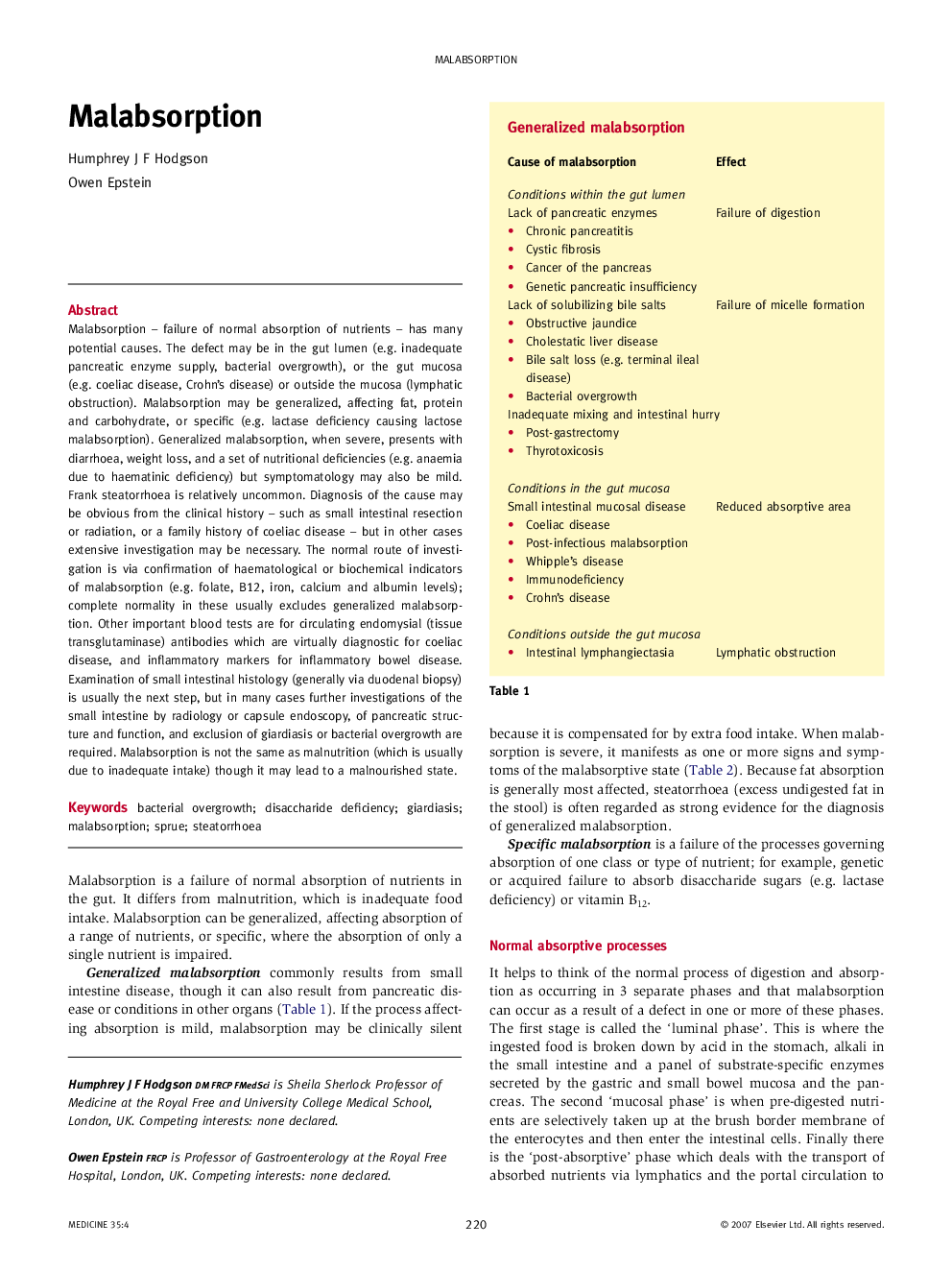| Article ID | Journal | Published Year | Pages | File Type |
|---|---|---|---|---|
| 3804541 | Medicine | 2007 | 6 Pages |
Malabsorption – failure of normal absorption of nutrients – has many potential causes. The defect may be in the gut lumen (e.g. inadequate pancreatic enzyme supply, bacterial overgrowth), or the gut mucosa (e.g. coeliac disease, Crohn’s disease) or outside the mucosa (lymphatic obstruction). Malabsorption may be generalized, affecting fat, protein and carbohydrate, or specific (e.g. lactase deficiency causing lactose malabsorption). Generalized malabsorption, when severe, presents with diarrhoea, weight loss, and a set of nutritional deficiencies (e.g. anaemia due to haematinic deficiency) but symptomatology may also be mild. Frank steatorrhoea is relatively uncommon. Diagnosis of the cause may be obvious from the clinical history – such as small intestinal resection or radiation, or a family history of coeliac disease – but in other cases extensive investigation may be necessary. The normal route of investigation is via confirmation of haematological or biochemical indicators of malabsorption (e.g. folate, B12, iron, calcium and albumin levels); complete normality in these usually excludes generalized malabsorption. Other important blood tests are for circulating endomysial (tissue transglutaminase) antibodies which are virtually diagnostic for coeliac disease, and inflammatory markers for inflammatory bowel disease. Examination of small intestinal histology (generally via duodenal biopsy) is usually the next step, but in many cases further investigations of the small intestine by radiology or capsule endoscopy, of pancreatic structure and function, and exclusion of giardiasis or bacterial overgrowth are required. Malabsorption is not the same as malnutrition (which is usually due to inadequate intake) though it may lead to a malnourished state.
